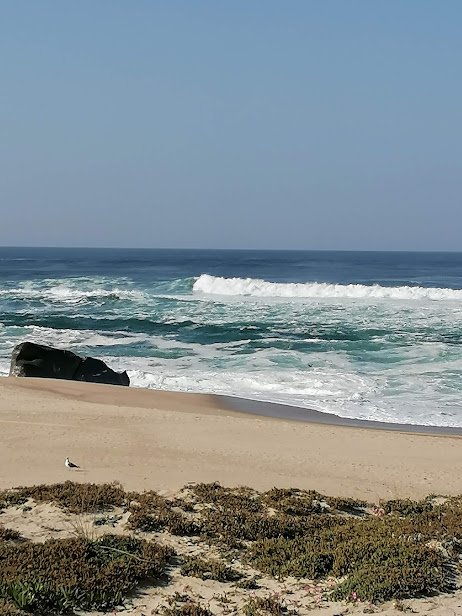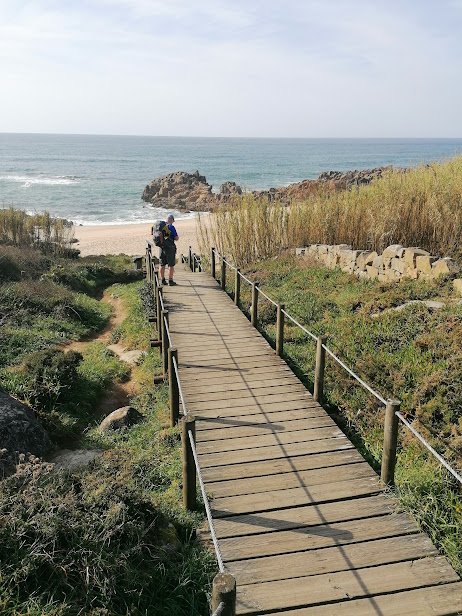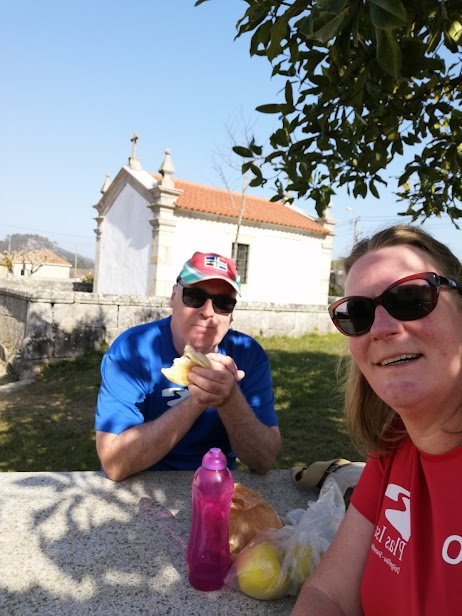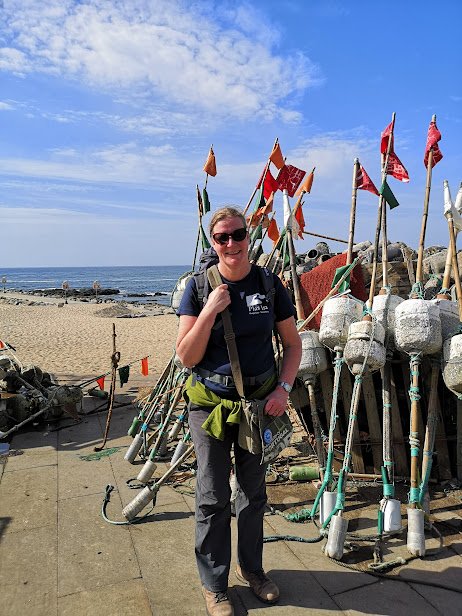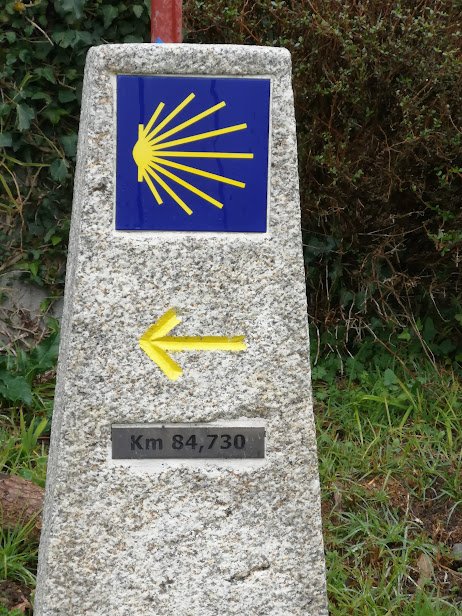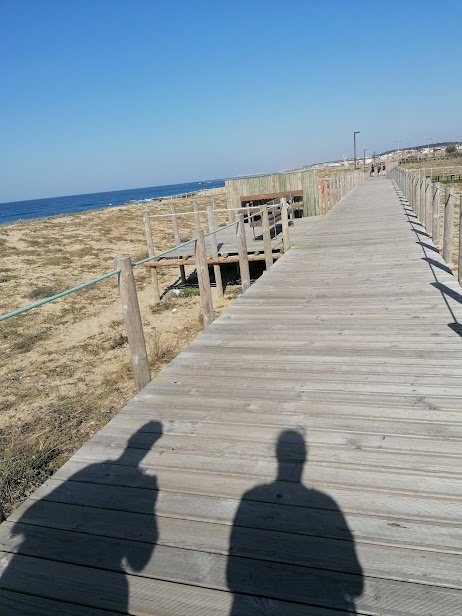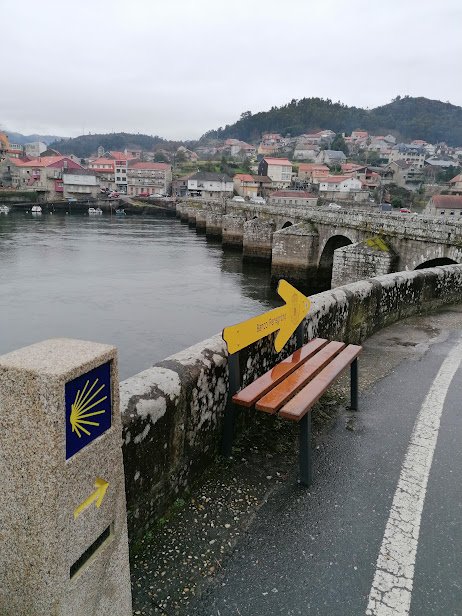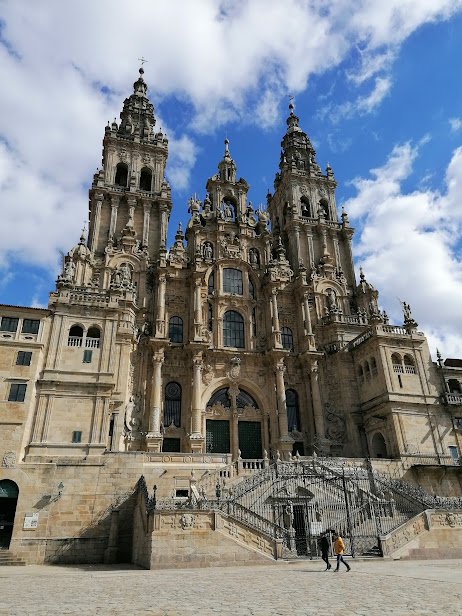Camiño de Santiago de Compostela - February 2023
A short story about us walking the Camiño de Santiago de Compostela. It's been a great adventure and experience, something we can definitely recommend if you like long distance walking.
Porto Cathedral
Do you have a wishlist of walks, hikes or other adventures you would like to do? Some might call it a Bucket List… For years, walking the Camiño de Santiago de Compostela has been high on our list of things to do. The more we thought about it and looked into it, the more enthused we felt. And once we decided to go from Porto to Santiago along the Portuguese coastline, it was just a matter of blocking the calendar.
On Sunday 12th February, with just a small backpack each, we flew to Porto where our adventure started. Once we collected our stamp cards at the Cathedral in the old centre of Porto, it all got real. The sun was shining, and with a special send off from a street busker and her violin, we made our way to Matosinhos, our first stop. We were so lucky with the weather, who expects bright blue skies and 20C in the middle of February?
Over the next few days, we thoroughly enjoyed watching the big waves crashing over the rocks or roll on to the beach. The bright blue sea looked so beautiful and was tempting us (well, Hanneke only to be honest) to come in for a swim. We had two attempts and had to admit defeat, the Atlantic ocean in winter is only for hardy cold water swimmers.
The coastline of Portugal is beautiful, and you can see why there are endless wide boulevards and apartment blocks. As it was still winter, it was very quiet but it’s not difficult to imagine that it is a very popular holiday destination in the summer months. After Esposende, we moved more inland where we enjoyed eucalyptus woods, rivers and streams and a different landscape. It also meant that we had more ups and downs to deal with, which was pretty tiring, especially as the temperature had risen to over 20C.
After 6 days walking, we decided it was a good time to take a rest day. Just a day to leave the backpacks where they are, get some washing done and enjoy a rest. The view from the hotel was straight onto the beach of Vila Praia de Ancora. As it was the Atlantic rolling in, it was an amazing sound at high tide.
Once back on the trail, the weather had changed to overcast and a drop in temperature to around 17C (a lot colder at the start of the day). At Caminha, we reached the river Minho, which is the border between Portugal and Spain. The main boat to cross the river was suspended, the only option was a small boat which very much reminded us of the ferry between Fairbourne and Barmouth.
The following day, turned out a bit different than planned. It was supposed to be an easier day of 18km to Mougas, to finish the stage we started the day before. It turns out that Mougas is just a tiny hamlet with one hostel and a café - both shut for winter. There was no alternative than to continue the route. Every hotel and pension etc we went past, was either shut for winter or had not been open for years by the looks of things. All in all 18km turned in to 32km!!! Our feet and legs didn't feel like our own anymore.
When we inspected our "injuries" an easy decision was made - it was wise to stay put in Baiona for an extra day. After a good rest, we were to go again and we walked only the short 6km to A Ramallosa.
Carnival in Pontevedra
Vigo was the next destination - a bit of a culture shock to be in a big city after walking through so many old villages and small towns. We did not really see much of it as we arrive late and were very tired.
Via Redondela, we reached Pontevedra where we were welcomed by a carnival band singing something about Pilgrims. As soon as they spotted two “true” pilgrims, we were invited to join in. Without knowing much more than just a few words of Spanish, it ended up with an enjoyable sing song. As it turned out, it was the last day of Carnival which was a family event on the main square, celebrating the life and death of a Parrot called Ravachol
After this surreal experience, it was time to move on to the last stretch of the Camino, via Caldas de Reis to Padron. In Padron, we called the phone number of a private Albergue and we hit the jackpot - a complete hostel all to ourselves, super clean as it was ready for the new season!
In the morning, we packed our bags for the last time. And we headed for Santiago de Compostela to get our last stamp and certificate!
Cathedral of Santiago de Compostela
Route
If you enjoy long distance walking, it is definitely a challenge to get your teeth into.
270 kilometres (= 169miles) took us 14 days to complete, along beautiful beaches, through quiet towns and villages of both Portugal and Spain.
In general, the paths are easy to walk and well sign posted. There can also be markings on the road as well as signs.
As it is a coastal route, there are not many hills till you get to Spain and even then the daily ascent/descent is not much.
Accommodation
We chose to pre-book the first two nights only. This gave us a peace of mind that we had accommodation the night of arriving in Porto and the night after the first, short leg of the walk. The rest of the trip, we either looked for a place to stay as we arrived in the town, using our guidebook or the internet to book online.
We found that there were many accommodation options along the route. From very cheap beds in a dormitory at an “Albergue de Peregrino” (=pilgrims hostel), to private Albergues (slightly less basic and more expensive), guesthouses, hotels and apartments. As it was out of season, it was very quiet, especially in Portugal. We were lucky on several occasions to have a whole dormitory to ourselves, and twice we even had the whole hostel to ourselves. However, we also found that a lot of the accommodation was closed for the winter period.
Food and drink
Every day, we had breakfast before we left and took some sandwiches, fruit and water with us. En route, we often popped in little cafes to top up our caffeine levels with a double expresso. The places where we stayed at the end of each stage, had plenty of options for dinner. Some bars and restaurants follow an old tradition of offering a special Pilgrims menu, with limited options of food and drink at a reduced price.
What to take
Our advice would be to take as little as possible. Our backpacks weighed approx 6-7kg each and contained 2 sets of clothes, travel towel, small sleeping bag, extra pair of light training shoes, toiletries and a few bits and pieces. And a waterproof coat, that we used more for the cold in the evenings rather than the rain as we were really lucky with the weather.
We used Ciscerone’s guidebook “The Camino Portugues” for our preparation as well as during the walk. The route is, in general well sign posted - the guidebook was definitely helpful on a few occasions where it was not so clear. The additional benefit of a guidebook is that it provides information of places of special interest, details of accommodation close to the route and places to eat & drink. With the guidebook you can also plan ahead as each chapter/stage tells the distance as well as ascent and descent.
If you are thinking of doing the same route and would like to know more - feel free to get in touch.








